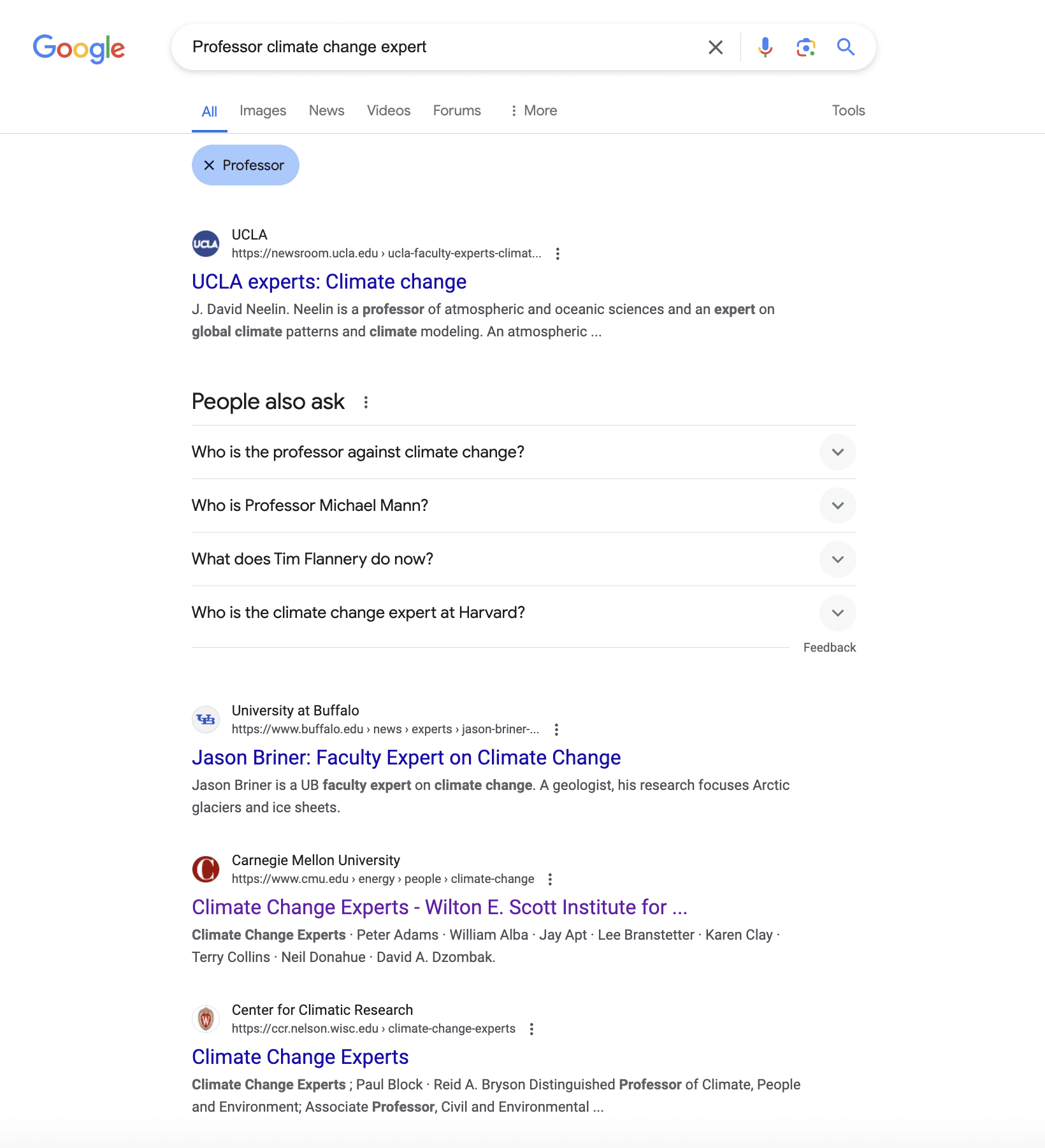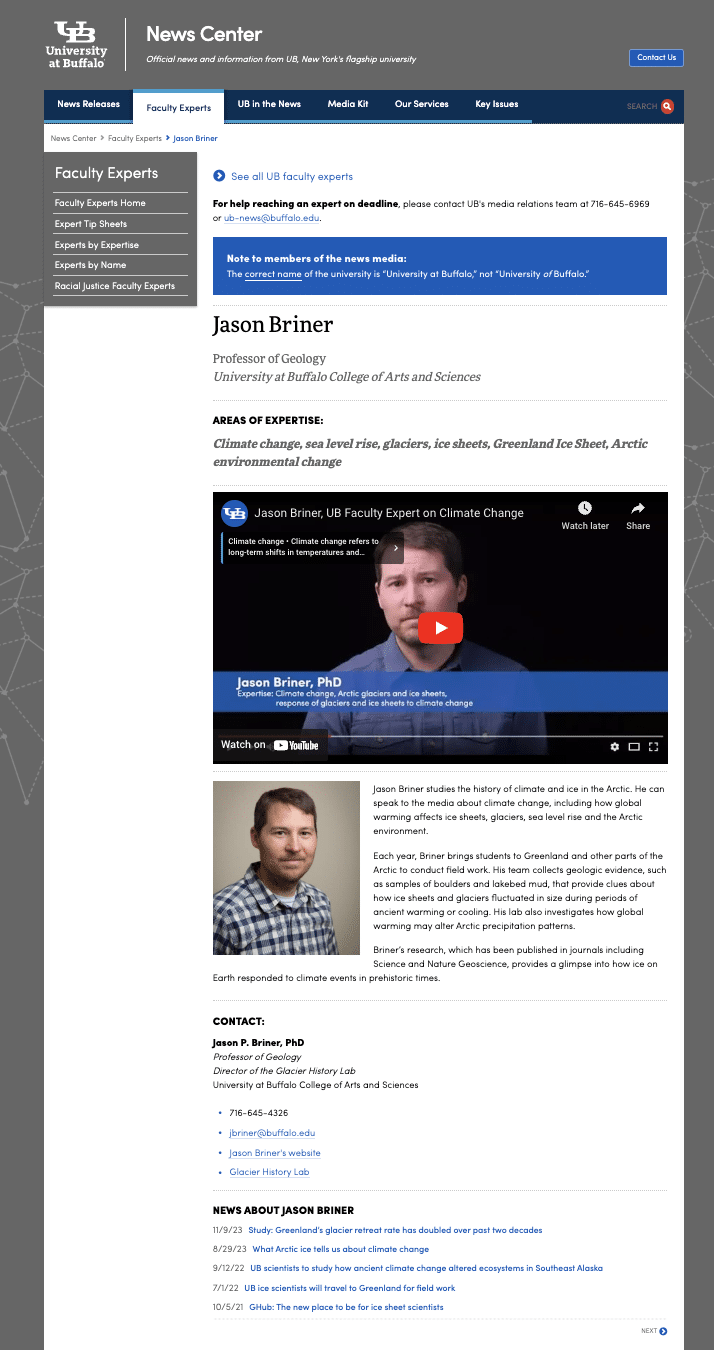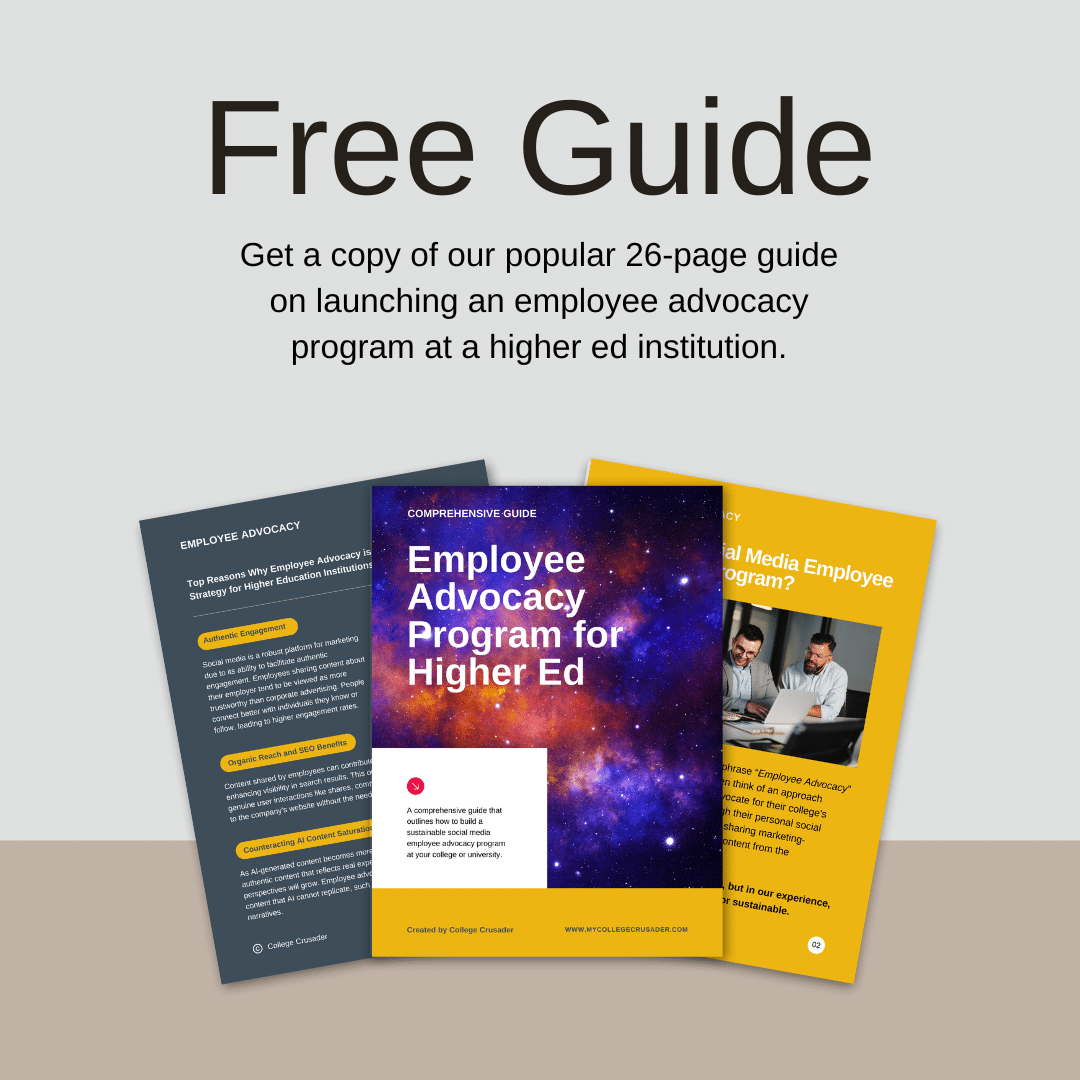
Social Media Amplification through College Publicity. Digital image. OpenAI's DALL-E, 2024.
As I tune into my favorite podcasts and scroll through trending topics on social media during my morning routine, I appreciate how both traditional and newer media platforms integrate expert commentary into their storytelling. It’s common to hear:
“Dr. Smith, from University X, thanks for joining us today to discuss this trending topic…”
Or
“Joining us from Institution Y, Dr. Smith, can you share insights on your latest research?”
In addition to radio, TV, print publications, podcast hosts and video content creators frequently feature higher education experts to add depth to their episodes, and social media platforms buzz with posts and articles highlighting scholarly insights and discoveries. This cross-platform visibility not only enhances the reach of the faculty's and staff’s work but also invites engagement from a broader audience.
The Potential of Institutional Exposure
Imagine these experts coming from your institution. Such exposure is invaluable as it doesn’t just reach potential students; it reaches donors, researchers, journalists, conference organizers, and peers, enhancing your college’s reputation organically.
Strategies to Amplify Your Institution's Publicity
Your university could hire a PR firm or ask your internal PR team to publish news releases proactively and pitch stories to producers, reporters, and journalists to increase your institution’s media visibility and brand awareness.
However, what if you could turn “looking for opportunities” into “opportunities looking for you”? Would that help you save time and resources?
Here’s how you can increase opportunities that find your faculty, staff and leaders:
1. Optimize Faculty and Staff Profiles for Search Engines and AI Platforms
Journalists and content creators frequently use search engines, AI tools and social media to source experts. They might search for “climate change expert” or look up trending hashtags related to ongoing environmental conferences or ask ChatGPT to create a list of well-known experts in this area. Therefore, in an era where AI shapes search algorithms and content visibility, having SEO-optimized faculty profiles on institutional websites and platforms like LinkedIn is essential.

For example, pages from UCLA, University of Buffalo, and Carnegie Mellon University often dominate Google’s first page for “climate change expert” searches. The page with faculty profiles from the University of Buffalo ranks second in organic search results. It is well-organized and provides information about the faculty’s expertise, also linking to expanded faculty profiles with contact details.

This quick exercise demonstrates the importance of prominently featuring your institutional experts.
Food for Thought:
The strategy of highlighting faculty on your website sounds obvious, but it takes the time to implement it right. Trust me, I know how challenging it can be to develop information-rich profiles for your faculty and staff and then optimize them for search engines. The process of collecting and updating faculty profiles becomes even more complicated if your institution has contributing and part-time faculty who might also be employed by other institutions and organizations. This strategy takes time and dedication to implement and maintain, but it is an effort that is worth undertaking and can result in increased web traffic, media opportunities, brand awareness and credibility for your school or research center.
The steps you can take:
- AI Optimization: Utilize AI tools to analyze and optimize how faculty profiles are presented online, ensuring they rank well for relevant queries.
- Visibility: Assess how visible these profiles are in search results and on social media platforms.
- Regular Updates: Keep faculty and staff profiles fresh with recent publications, interviews, and talks.
- Rich Content: Create content rich profiles on your college’s website, Include multimedia such as video interviews, podcast episodes, and interactive Q&A sessions.
- Accessibility: Make sure profiles are easily accessible, provide direct contact methods, and links to their professional social media pages, making it easier for media professionals to connect with them.
2. Engage Proactively on Social Media
Social media platforms are not just for sharing news but also for engaging in real-time discussions. Training your faculty and staff to build their personal brands online is a strategic move that can enhance your internal capabilities and create a win-win situation for both the employee and the institution.
Benefits for Employees:
- Professional Development: Enhances skills in communication, digital literacy, and personal marketing. Exposes them to trending industry discussions and research.
- Research Visibility and Collaboration: Increases the exposure of their work, facilitating new academic partnerships and collaborative opportunities.
- Increased Enrollment and Interest in Their Programs: Maintains connections with alumni which can lead to successful alumni stories, referrals, and boosted program credibility.
- Job and Consulting Opportunities: Elevates their profile in their field, opening more professional opportunities including consulting gigs.
- Funding and Industry Partnerships: Raises their profile among potential funding sources and industry partners, making it easier to secure research grants and collaborations.
Benefits to the Institution:
- Amplified Visibility and Reach: Brand messages are re-shared up to 24 times more frequently when distributed by employees rather than the brand itself. Employees can attract up to 10 times more followers than the brand’s corporate accounts, leading to higher organic social engagement.
- Increased Trust: 76% of individuals say they’re more likely to trust content shared by "normal" individuals over brands. Furthermore, a 2021 Connected Leadership survey revealed that 90% of people trust leaders who actively use social media more than CEOs who do not.
- Influencing Talent Acquisition: Organizations with socially engaged employees are 58% more likely to attract top talent, enhancing employer branding.
- Potential Partnership and Win-Win Opportunities: Active social media engagement by faculty and staff can lead to new business opportunities, mutually beneficial partnerships, and collaborative projects that benefit both the individual and the institution.
This strategy not only supports the professional growth of individuals but also strengthens the institution’s reputation and operational success, while increasing opportunities for publicity.
Encourage faculty and staff to:
- Grow Personal Brands: Empower faculty and staff to develop their personal brands, colleges not only enhance their internal capabilities but also extend their reach, trust, and influence in the academic and professional communities.
- Participate in Conversations: Join LinkedIn discussions, and hashtag campaigns to boost visibility.
- Host Live Sessions: Platforms like Facebook Live or Instagram Live are excellent for informal chats on recent research findings or topical issues, directly engaging a broader audience.
- Create Content: Regular posts, blogs, or even short videos discussing their field of expertise can help in building a thought leadership profile.

3. Utilize Multimedia Content
With the rising consumption of video and audio content, incorporating multimedia materials into your marketing strategy is more important than ever. Marketing and communications professionals should focus on integrating their experts—faculty and staff—in institutional marketing strategies, leveraging this human element not only to humanize the institution but also to showcase their knowledge and expertise. This approach can significantly boost engagement, increase the institution's reach, and provide a more relatable and trustworthy image to the public.
- Videos: Short, informative videos where faculty discuss their research findings or provide opinions on current events can significantly boost engagement. These videos can serve multiple purposes from enhancing engagement, and humanizing the brand to showcasing expertise.
- Podcasts: Either hosting or guesting on podcasts can reach audiences preferentially consuming audio content. Podcasts are an effective medium to extend reach, demonstrate thought leadership and engage deeply.
- Webinars and Online Workshops: These platforms offer direct engagement with interested audiences, providing deep dives into specific subjects.
Integrating Experts in Marketing Strategies
Marketing and communication professionals should:
- Align Content with Strategic Goals: Ensure that the content produced aligns with the institution’s overall marketing goals, such as increasing enrollment, promoting specific programs, or building brand reputation.
- Leverage Faculty Expertise: Use the unique knowledge and skills of the faculty to create content that stands out.
- Humanize the Content: Show the people behind the knowledge to create a more relatable and trustworthy brand image.
By focusing on these multimedia strategies and integrating faculty expertise into marketing efforts, institutions can not only enhance their profile but also create meaningful connections with their audience, leading to increased engagement, trust, and visibility. This holistic approach to using multimedia content not only enriches the institution's marketing initiatives but also significantly contributes to its strategic goals.
4. Monitor and Engage with Trends
Keep an eye on trending topics on the news, as well as X, LinkedIn, YouTube, TikTok and even niche forums related to your faculty’s areas of expertise. Engaging with these trends through comments or thought pieces can position your faculty as go-to experts when journalists need commentary on hot topics.
5. Leverage Paid Advertising
When competition for visibility is high, especially during significant global events or trending issues, paid search ads and social media ads can ensure your faculty’s profiles appear before relevant audiences. This strategy complements organic growth efforts and can boost visibility during critical times.
The combination of traditional search engine visibility with proactive social media engagement forms a robust strategy for publicizing your university through its faculty. By adapting to these platforms, you not only maintain but also expand your reach, ensuring that your faculty are seen as the foremost authorities in their fields. Embrace these strategies to transform how potential collaborators, students, and funders perceive your institution's expertise.
Is faculty involvement part of your current marketing and PR strategy? If not, might this be a valuable approach to consider?
Conclusion
Today, the combination of traditional search engine visibility with proactive social media engagement forms a robust strategy for publicizing your university through its faculty. By adapting to these platforms and utilizing generative AI tools, you not only maintain but also expand your reach, ensuring that your faculty are seen as the foremost authorities in their fields. Embrace these strategies to transform how potential collaborators, students, and funders perceive your institution's expertise.
